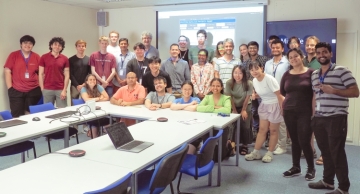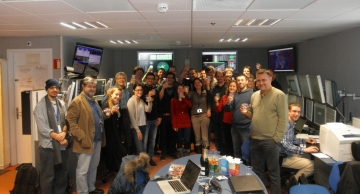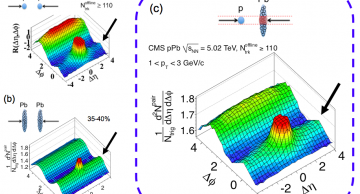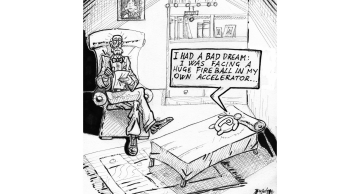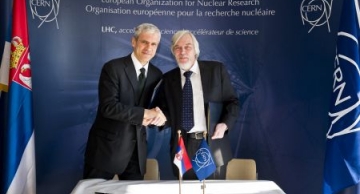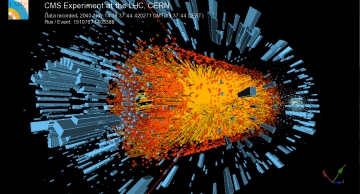This year, the LHC is colliding more than protons and lead ions: oxygen and neon have also made it into the collider, and are being studied by CMS and the other LHC experiments in order to understand the early universe!
This is the first time that…
Quarks are elementary particles in the Standard Model and the building blocks of the protons and neutrons in atoms. The dominant force between quarks is the strong interaction. Gluons are the force carriers of the strong interaction, and one thing…
High energy heavy-ion collisions provide a unique opportunity to study one of the four forces of nature, the strong force, under extreme conditions. A new result from the CMS experiment shapes our understanding of the strong interaction and further…
The CMS collaboration presented over ten brand-new results in the latest installment of the Quark Matter conference, one of the largest conferences in the field of heavy-ion physics.
In heavy-ion physics, the properties of the quark-gluon plasma, a…
The LHC has just delivered the first pPb (proton-lead) collisions with stable beams of 2013 and CMS is happily running with all sub-detectors on. We are also having common triggers with TOTEM and everything is behaving very well.
Thanks a lot to all…
The new year brings a new type of collision at the LHC: the accelerator will smash protons and lead nuclei together, allowing CMS and the other LHC experiments to study the cold nuclear matter we expect these collisions to produce. Although we…
In 2011, CMS presented early evidence that Upsilon (Υ) particles produced in lead-lead collisions “melt” as a consequence of interacting with the hot nuclear matter created in these heavy-ion interactions. CMS has since updated and extended this…
CMS has published its first paper on proton-lead (pPb) collisions, describing the observation of a phenomenon that was previously seen first in nucleus-nucleus collisions but also detected by CMS in proton-proton (pp) collisions. The effect is a…
Our best understanding of the early Universe tells us that a dense medium, known as the quark-gluon plasma (QGP), existed in the first microseconds after the big bang. These early-Universe conditions can be mimicked in particle colliders by smashing…
The Quark Matter 2012 conference, held in Washington DC from 13-18 August 2012, brings together experimental and theoretical experts in the area of heavy-ion physics. This week, the CMS collaboration is presenting many exciting new results using…
On 10th January, a delegation from Serbia, led by President Boris Tadic, arrived at CERN to sign the agreement that would grant Serbia associate membership to CERN, as a step towards full membership. The agreement has to be ratified by the Serbian…
The CMS collaboration is presenting its latest results this week at the annual Quark Matter conference, held this year in Annecy, France. The results are based on analyses of data collected during the LHC's heavy-ion run in the last two weeks of…
Pagination
- Previous page
- Current page 1
- Page 2
- Next page

